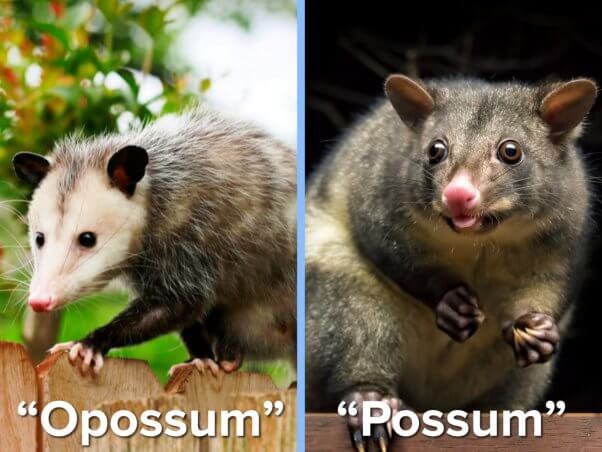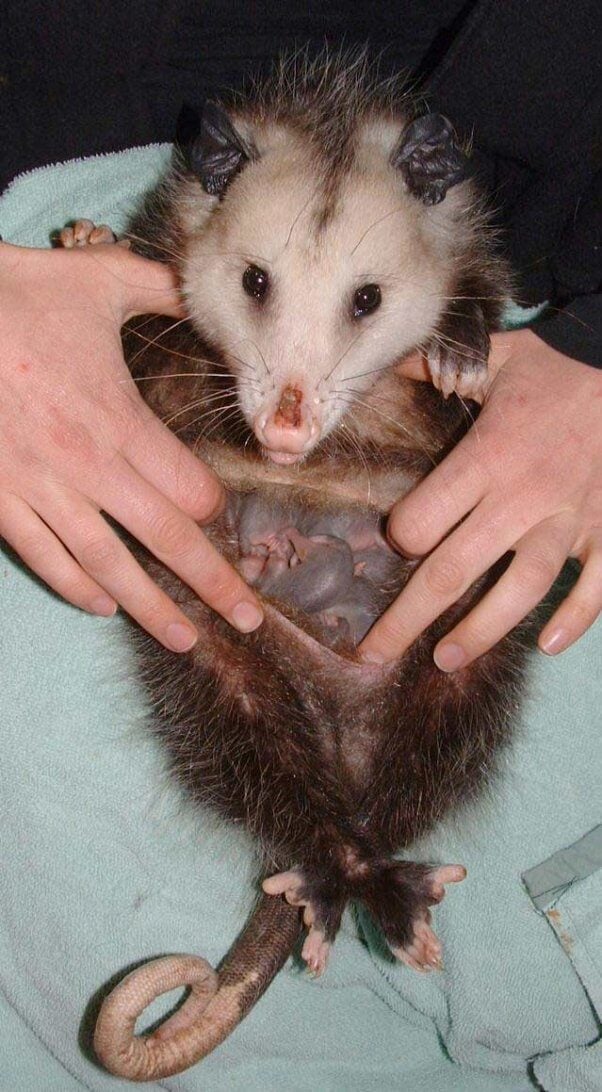A Neighbor, Not a Nuisance: Getting the Facts on Opossums
Opossums are nocturnal marsupials who live in parts of the eastern half of Canada, the U.S., Central America, and South America. They’re around the size of a cat, prefer to travel solo, and have a life expectancy of one to two years. They’re also natural athletes, excelling at swimming, climbing, and long-distance walking. Here are some more facts about our opossum friends—including some that could even save lives.
‘Opossum’ vs. ‘Possum’
So what do we call these misunderstood marsupials? It depends on whom you ask! If you’re in the Americas, both “opossum” and “possum” refer to the Virginia opossum native to North and South America. However, some consider “possum” to be a specific term referring to an Australian family of marsupials, with “opossum” referring only to Virginia opossums. Confusing, right? Merriam-Webster has the full breakdown, if you’re curious.
What Do Opossums Eat?
As a scavenger with a strong stomach, the opossum plays a vital role in their ecosystem. They eat a host of insects as well as carrion, rotten fruit, berries, and even small rodents, cleaning up the areas where they roam. Ever resourceful, they’ve been known to root around in garbage and get free meals where they can. It’s common to find a picked-through trash can where an opossum has been.
To encourage opossums to eat something other than your garbage, start by sealing trash can lids with a bungie cord and feeding animal companions indoors.
Rabies? No Way!
Opossums are extremely resistant to rabies. Yes, you read that right—they rarely contract the virus, thanks to their low body temperature. However, they are accomplished bluffers and can display behavior meant to help protect them from predators, which can also fool well-meaning humans. The following are characteristic examples of behavior and do not necessarily indicate that an opossum has rabies:
- Opossums bare their teeth and hiss to scare off threats.
- Since they’re nocturnal animals, opossums usually sleep in a safe place during the day. If their den is disrupted, they’ll move in daylight and be disoriented or anxious.
- They “play dead”—anywhere from a few minutes to several hours—by lying still and releasing a foul smell, particularly if caught out during the day. This is an involuntary fear response, analogous to fainting in humans.
Looking Out for Opossums
Opossums are sensitive animals who are often unintentionally injured by humans. At best, disrupting their habitats forces them into the sunlight, where they scramble for cover. However, the consequences can be much worse: Clearing active opossum dens from locations such as trees or bushes can cause the animals to fall from great heights or be injured during the destruction of their homes.
Here are a few tips to help keep your opossum neighbors safe:
- If you’re planning intensive yard work, check for opossums first.
- If you find one, wait two or three days to see if they leave on their own, since opossums are transient. It’s always best to leave wildlife undisturbed.
- When driving at night, keep an eye out for the glint of their eyes as they try to cross roads.
Harsh winters can be especially hard on opossums. Since they don’t hibernate, they must endure the cold, find whatever food they can, and try to locate a den in sparse natural cover. Many opossums suffer from frostbite and lose parts of their sensitive tails due to exposure. If you’re interested in lending your local opossums a hand, the Opossum Society of the United States has a great guide to setting up a den box for a visiting opossum.
Devoted Mothers
Opossums give birth to an average of nine babies after their 13-day pregnancy. At birth, the babies are the size of honeybees. Since they’re marsupials, they nurture their babies—called joeys—safe in their belly pouch, where the babies develop after they’re born. Later, when the babies have grown enough, they ride along on their mother’s back. It takes a gentle touch and plenty of determination to raise all those young ones. Opossums also affectionately lick and nuzzle their loved ones, a practice known as “slubbing.”
Checking for Babies
When mother opossums are injured or killed, their babies may still be alive inside the pouch. However, opossums’ catatonic fear response can make identifying a dead opossum difficult.
Injured animals often labor to breathe or breathe rapidly—observe the chest and abdominal area for movement. If you can’t detect breathing or any other signs of life, you may attempt to touch the animal carefully—preferably while wearing a pair of protective gloves—and look for a response. Gently pinch a back toe to see if the animal pulls away. If it’s safe and feasible, you can also gently touch one of the eyes in order to test for a blink reflex.
If you determine a female opossum is truly dead, check her pouch for babies using our guide and call a local wildlife rescue group. If you need help getting in touch with the right person, call 757-622-PETA (7382) and a member of our Emergency Response Team will get back to you quickly with assistance.



